Hello from London! I’m staying in the home of my friend George, who lives in a very cute and cozy flat off Portobello Road, the neighborhood where I lived in my late twenties. George’s street is rainbow-striped with jewel-colored terraced houses. This particular stretch of road is sometimes known as Quality Street, after the colorfully wrapped chocolates, and the tourists fucking love it. Every minute of every day, the sidewalk is clogged with visitors posing for photos in front of ordinary people’s homes.
George’s neighbors are so sick of the noise, litter, and lack of privacy these Instagrammers bring (she has tripped over them doing wardrobe changes on her front steps) that they circulated a letter calling for the repainting of the buildings in grey or black. Why does the internet have to ruin all the nice things?!
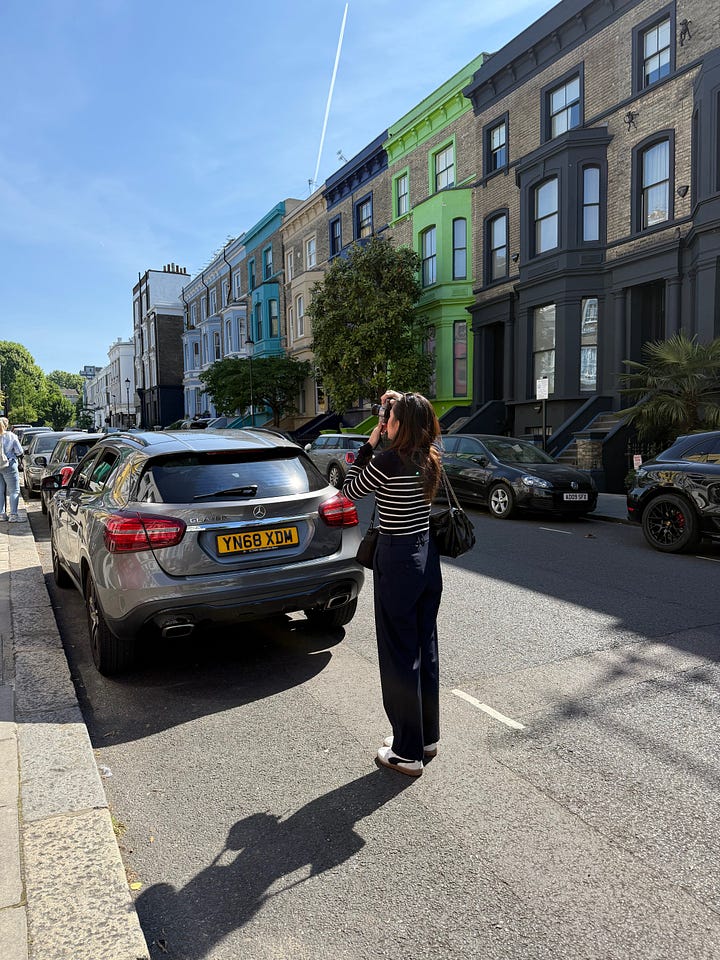
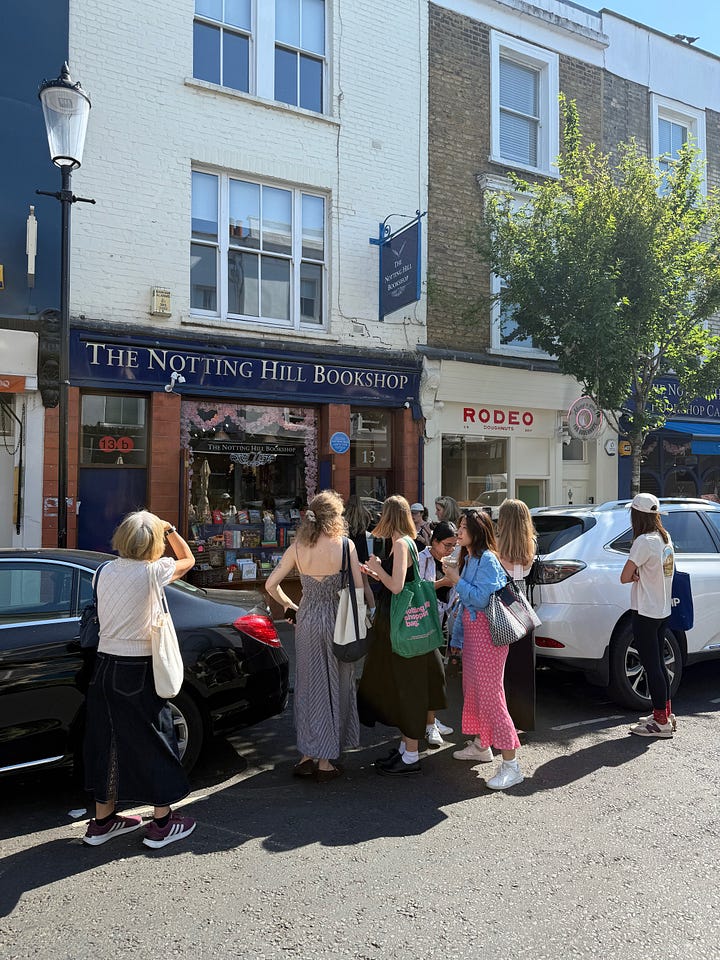

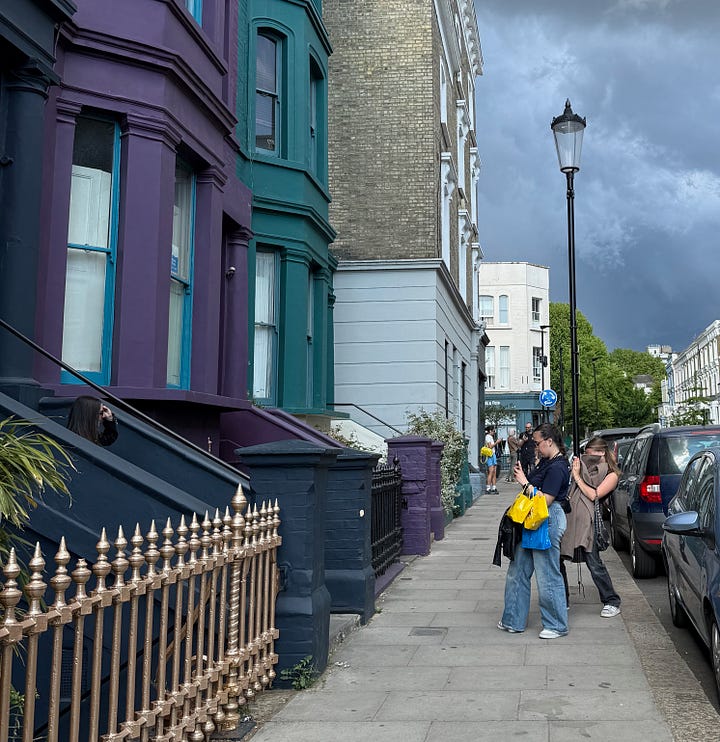
Putting up with goggle-eyed tourists comes with the territory when you live near a famous urban landmark, and I say this as someone who lives under the Hollywood sign. When I moved to Notting Hill back in the late nineties, the area was just in the early stages of being spoiled by Richard Curtis’s blockbuster movie of the same name. We rolled our eyes at the American looky-loos crowding into the eponymous travel bookshop with their big white sneakers and bulging fanny packs, but to be honest, I kind of got a buzz out of it. You people flew halfway around the world to catch a glimpse of how I live every day, haha!
Life in fin de siècle London was almost hysterically cool and we were very high on our own supply, especially in Portobello, which at that time was a bleeding-edge urban culture capital. Banksy’s spray-painted art appeared overnight on the sides of buildings. Zadie Smith made headlines by earning a six-figure advance while still a student, for her debut novel White Teeth, set in Willesden just up the road. Damon Albarn could be spotted pushing a baby buggy up and down the market when he was making Gorillaz in his flat on Westbourne Park Road—the same street where I lived with my three-year-old daughter.
A neighborhood populated by famous artists, celebrities, and ambitious up-and-comers makes for an intoxicating sense of possibility. When you’re surrounded by people making, buying, using, wearing, selling cool shit, you can’t help wanting to make cool shit, too.
I wasn’t writing at the time; instead, I was focused on fashion and visual arts. I went to all the exhibitions, took pattern-cutting and life-drawing classes, and completed a pre-degree fine art course. While my little girl was at nursery school, I sat at an industrial sewing machine wedged into the corner of our one-room flat, sewing tulip skirts and wraparound trousers to sell on my Portobello market stall.
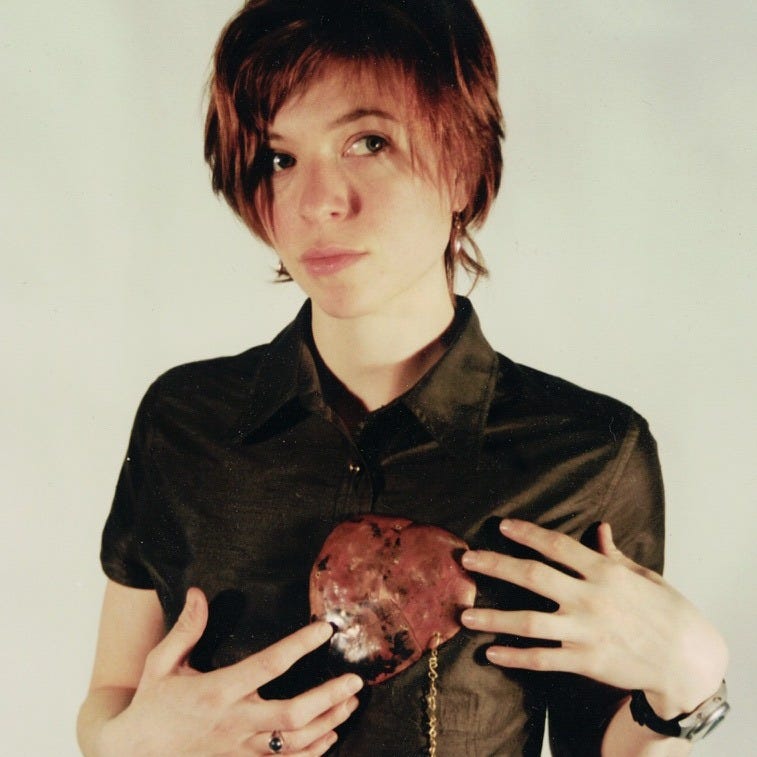
This place felt like a superstar incubator, with all the inspiration, connections, materials, market access, and global attention you’d need to launch a fabulous career in music, art, fashion, or photography. All you had to do is Make Your Thing Happen. It was exciting. Liberating.
Except when it was paralyzing.
Inspiring as it is, this is not an easy place to be a novice. Here I was, trying to be a fashion designer with a poxy little small market stall in a neighborhood I shared with Stella McCartney (and scores of up-and-coming designers far more dedicated than me). The stall was fun and I sold a few pieces every Saturday, but I was not exactly taking the fashion world by storm. I struggled to come up with original ideas. I was a haphazard seamstress, and honestly I couldn’t muster the gumption to put in the hard work of properly developing my craft. I think I wanted the lifestyle more than I wanted the life of a serious designer.
Consumerism is not creativity; jumping on a trendy bandwagon is not self-expression. Yet both are easy temptations for a frustrated would-be artist too timid to embark on the kind of deep soul exploration and steady practice that real art springs from.
I’ve never felt so painfully—and secretly—aspirational as I did living here. Counter-culture is funny because the status symbols are all so coded. You don’t lust after a Tiffany bangle or a Louis Vuitton bag. You want to pre-empt the trend for saffron Moroccan slippers before they show up in Frank magazine.
Of course, it wasn’t cool to care so much what other people think, or try so hard to impress. But I did care, and I did try. All my friends were instinctively stylish trend-spotters with their own unique aesthetic. We were awash in beautiful things on every corner: delicate, handmade ceramics, vintage fur coats, tasseled Indian cushions, one-off screen-printed tees, quirky little colored tea glasses... but is it me? Gawd. I hate to think of all the energy I wasted running these neurotic calculations in the back of my mind.
Leaving Portobello and its brash fecundity turned out to be good for my creative development. Of course I didn’t know how to be an artist back then, I didn’t even know what or who I really was a person, under all my social conditioning and yearning for acceptance.
To make your art, you need space to bring your inner self to the surface and study its features with more curiosity than judgement, and that is a wobbly process. That tender space is easily encroached upon by the flashing displays of other humans’ inner selves shining in their own creative glory. I would not have been able to hear the signal in the noise.
I don’t know what it takes to be so confident in your right to exist, so obsessively guided by your own curiosity, so undistracted by the opinions and demands of others, that you can make great art when you are young. Some people have it. I did not. These things—unapologetic curiosity about my own mind, contentment to put a satisfying process over salable product, detachment from social hierarchies—have only arrived for me in midlife. I’m grateful they are blooming in me at all, while I still have time to weave them into a garment I’m excited to wear.
The other day I was crossing Tavistock Square when a small triumph from two decades ago came to mind. One sunny afternoon, I was crouched on a low wall just over there, eating vegetarian shepherd’s pie out of an aluminum takeaway container, when a young Japanese guy approached me, camera in hand. He said he was shooting for a magazine, asked me what I was wearing, and would I mind having my picture taken.
Aha, here was one snap-happy tourist I did not resent. (And remember, this was way before Instagram; I don’t know if I’d feel the same if he was one of a hundred social media cool-hunters to stick a lens in my face while I was eating my lunch.)
I stood up to give him a twirl. I proudly explained that I’d designed and made my top myself, a fitted, cap-sleeved blouse with a Mandarin collar made up of contrasting panels of shot silk taffeta in silver and magenta, which I paired with oversized vintage paratrooper pants. He took my picture. I described my style as he took notes and wrote down my name. Maggie Langrick, a stylish Portobello local, a real Londoner, circa 1999.
And yes, if you suspect this post is meant to make you think I’m cool, you’re probably right.
Where’s Maggie?
Now: Portobello Road, London
Next: Corfu, Greece, May 21—June 10
Do you want to revive your long-lost creativity?
Do you long to create with more authenticity, courage, and meaning but tend to get blocked by performance anxiety or perfectionism? Are you looking to take your journaling to a deeper level? Or expand your writing practice into essays, a Substack, or even a book? I can help.
This is the essence of my creativity coaching practice. It’s not traditional book coaching (although I do some of that, too). But I’m much more interested in the barriers to creativity: Where they came from, the true toll they take on our lives, and how we can dismantle them.
Think of it as life coaching with a writing focus, or writing coaching that may transform your life.
You do not need to have a manuscript or even a defined project to work with me. Your fears are welcome. Bring your meanest head gremlins, your chronic procrastination, your sensitivity to criticism, your shaky voice, your embarrassment about your lack of progress, your audacious ambition, and your back burner of abandoned projects.
Please know that I was once lost in the sauce like you are now. Recovering my creativity has transformed my entire life. As an ICF-certified Wayfinder Life Coach, what I want most is to share the gift of creative liberation with you.
Apply through the link below, and we’ll start with a quick call to make sure it’s a fit.
Publish your book with Wonderwell Press
Do you have a finished manuscript or work-in-progress that you want to get published? Looking for editorial and marketing support from smart, experienced publishing professionals? Submit your project to Wonderwell Press below, and your book could be in stores by this time next year.





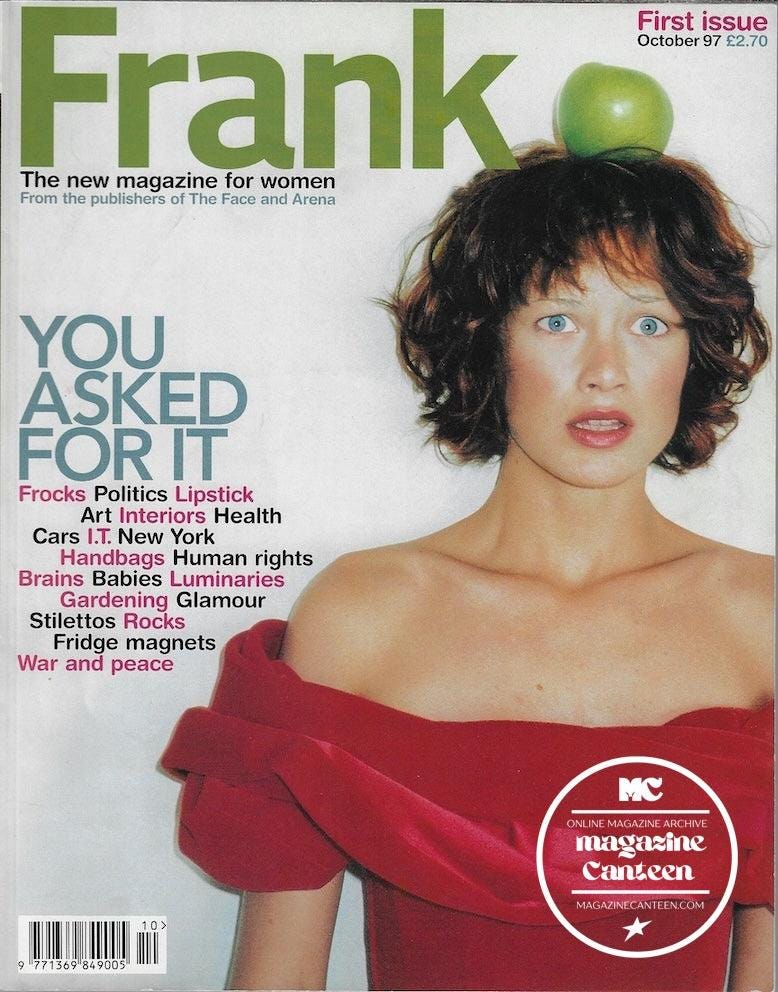

Loved this, Maggie. Your words helped me navigate some similar feelings I’m navigating at this young age of 50. In some ways it never ends. ♥️